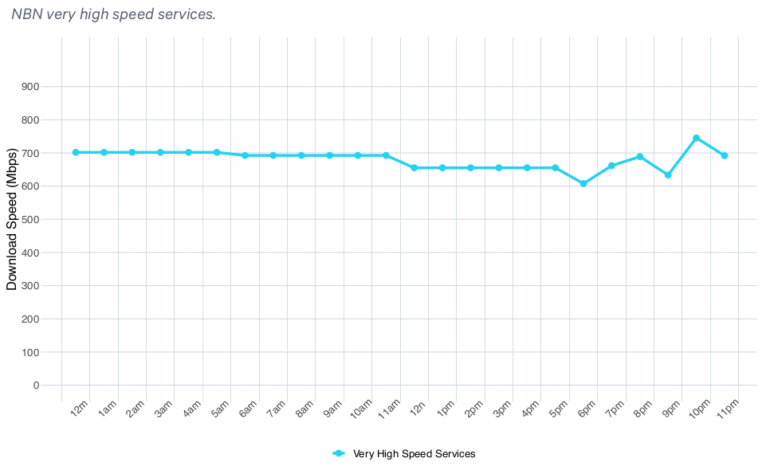Average speed on NBN’s 500-1000/50Mbps plan
Image: ACCC
If you are thinking that you need to jump from an NBN 50Mbps speed plan to 100Mbps because your web browsing seems slow, the the Australian Competition and Consumer Commission (ACCC) has a simple piece of advice: Don’t.
“Moving from the 50/20Mbps tier to the 100/40Mbps tier would lead to almost no noticeable improvement in web performance,” a report from the ACCC prepared by SamKnows said.
“This finding suggests for consumers whose main activity is web browsing that plan speed need not be a core consideration when selecting an internet plan.”
Naturally enough, higher speed plans do make for slight increases in page load times, but the report said these differences were not material.
Similarly, there is little to be gained from switching NBN providers.
“Results for all the major RSPs tested are very satisfactory and suggest there are immaterial differences in performance between providers. All the RSPs studied offer good web performance which suggest that choice of RSP is not likely to have a significant impact on web browsing performance,” it said.
“This finding means that other factors outside of a consumer’s control, such as the design and operability of a website, will have a greater impact on how a website performs and the experience of interacting with it.”
In the regular Measuring Broadband Australia report also released on Wednesday, it was revealed that 500-1000/50Mbps services that NBN labels as Home Ultafast receive an average download speed of 670Mbps.
This number was determined from 6,750 tests conducted across 52 fibre-to-the-premises and HFC connections.
At this speed tier, the report said there was “considerable variation” throughout the day, with the 6pm drop being 138Mbps below the 11pm peak.
“This dip in speeds for very high speed services is greater than for the other major NBN plans … including NBN100 plans,” it said.
“This shows that NBN very high speed plans are more susceptible to congestion during busy periods than lower speed plans.”
Uploads speeds were much more reliable, and sat around the 45Mbps mark throughout the day.
For the month of February, the report said Vocus-owned Dodo and iPrimus were dragging the chain on download speeds, only hitting 87.7% of plan speeds. Leading the way was Exetel on 100.3%, followed by Optus on 100%, Telstra with 98.3%, TPG with 97.5%, and Aussie Broadband on 96.6%.
For upload speeds, iiNet was slowest with 81.6% of plan speeds, followed by Aussie Broadband on 81.9%, while Exetel continued to lead the way with 89.2%, and MyRepublic had 87%. The rest of the NBN retailers were clumped in the 84-87% range. Uploads speeds will not reach the same percentage mark as download because NBN does not overprovision it.
Of the 1.117 services used for the speed test, 8.1% were classed as underperforming.
“0% of underperforming NBN services are fibre to the node connections. 98% of underperforming NBN services are on NBN50 and NBN100 plans,” the report said.
“The average download performance once underperforming services are excluded is 100.3% as against the 96.7% figure quoted earlier for all services.”
On 50Mbps plans, fibre to the node was around 6Mbps, or 12%, lower than other access technologies, and on 100Mbps plans was 16Mbps slower.



